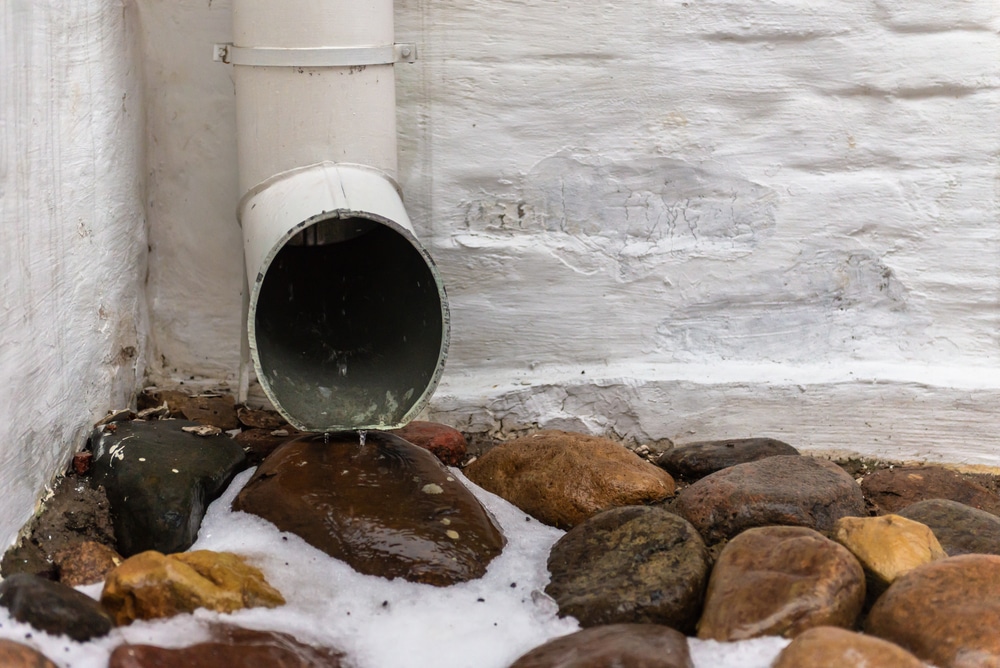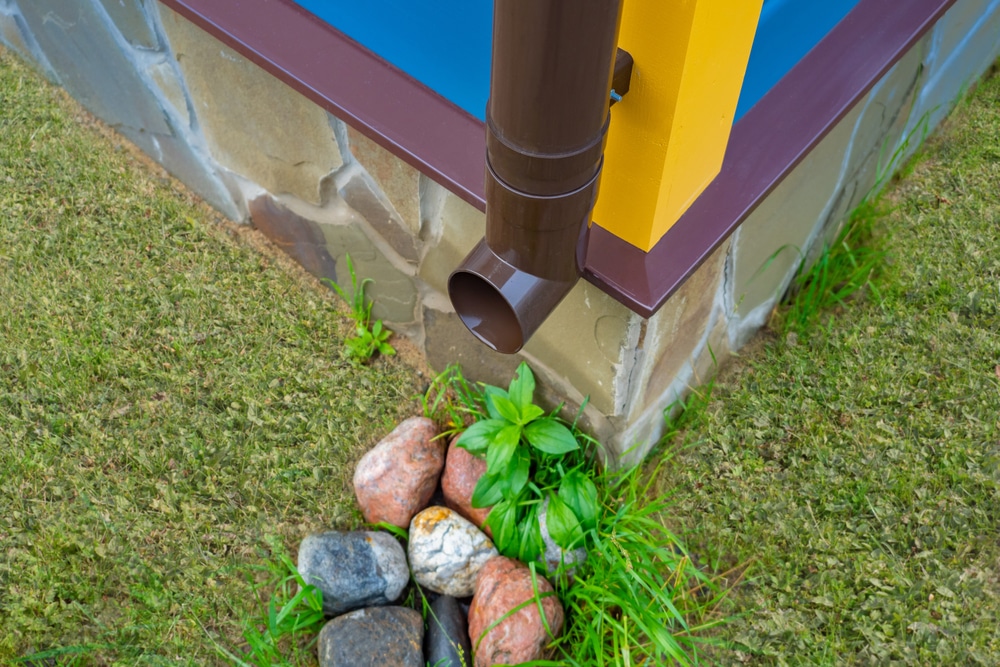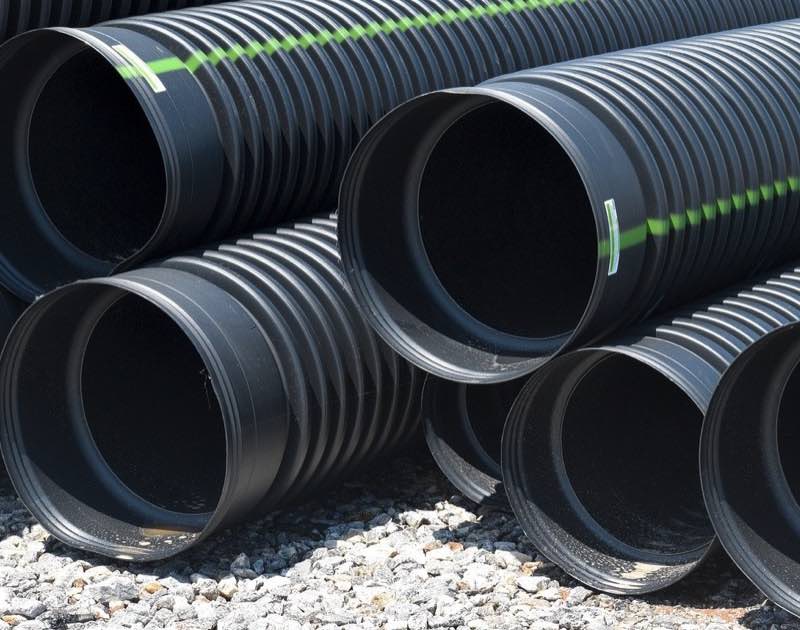Homeowners with downspouts that are not connected to a drain system often have issues with water puddling around their homes. Having standing water in your yard, particularly if it’s not draining away and is right next to your home’s foundation, can lead to excess moisture inside. This can damage your foundations and create a damp basement. Let’s look at some downspout drainage ideas that can help you improve drainage and avoid problems in the future.
Downspout drainage ideas
If you want to prevent problems and maximize water drainage from your yard, consider using one of the following downspout drainage ideas.
Install a catch basin
Catch basins are simple plastic containers that can be placed beneath downspouts to redirect rainwater away from your home effectively. Typically made out of polyvinyl chloride (PVC), these containers have an angled chute that funnels the water into a second pipe where it can be directed to a nearby garden or drain.
Use siloed piping
In order to redirect water directly away from your house, consider using PVC piping in conjunction with a sloped grade that eliminates any standing water near your home’s foundation.
This method can be done by digging down a few inches and placing short PVC pipes on an angle near the house. The first pipe should be dug into the ground so that it can catch any water, while the second one should lead to either a dry well or a storm drain.
Separate your downspouts
If you have several downspouts from your roof, consider redirecting water from those closest to your home and using them to irrigate areas of the yard that are farther away. This allows you to make use of the excess water without having it pool around your house or cause any damage by overflowing.
Install a rain barrel
One of the most effective methods is to install a rain barrel. A rain barrel can be attached to a drainpipe to catch the runoff water. You can then use the water to water your vegetable garden. This is a good idea if you live in an area that is prone to drought, as you can collect and store water to use at a later date.
This is an eco-friendly solution, and you can even use the water for other jobs around your yard, such as washing your car.
Build a French drain
A French drain is a trench filled with gravel and rocks that redirects water away from an area. It can be placed in the ground next to your home, or it can be put underneath driveways.
This type of drainage system is often used to prevent basement flooding, but it can also be effective for preventing mud puddles in your yard.
How far should a drainpipe extend from your home?
There is no definitive answer as to how far your drainpipe should extend from your home, as this will depend on a few different factors. If you are concerned about the possibility of flooding in your basement, it may be beneficial to install a French drain that extends quite far away from the edge of your property.
However, if you only want to prevent mud puddles from forming in your yard, a shorter drain may be sufficient. In general, it’s recommended that you extend the drain at least 4 feet away from the downspout.
Can I build a drainage system myself?
Downspout drainage can be a DIY job, but it will depend on your skills and experience. You may be able to add extra pipes and redirect water yourself, but if you want to build a more complicated drainage system, it’s best to consult an expert.
If you are interested in installing a more complicated drainage system or a French drain in your yard, it is important to consult with an experienced contractor or engineer first. They can help you design the optimal drainage system for your property, ensuring that water is diverted away from the area without causing any damage to the structure of your home or creating safety hazards.
Additionally, they can help you determine the best materials to use for your drainage system so that it will be able to handle water effectively without becoming clogged or damaged.
How to maintain a drainage system
There are a few things you can do in order to take care of your drainage system and ensure that it continues to work properly for many years to come. First, you should regularly clean out any debris, such as leaves, gravel, and sludge, from your drain and gutters, making sure that they are not clogged.
Additionally, you should regularly inspect your drainage system to ensure that it is functioning properly. If you’ve built a French drain, you may need to add more gravel or rocks to the trench if water starts flowing too slowly through the drain.
Conclusion
These downspout drainage ideas can help keep your home dry and your yard well-irrigated during the rainy seasons. By using any or all of these methods, you can avoid water damaging your home’s foundation and make the most out of each rainstorm.



